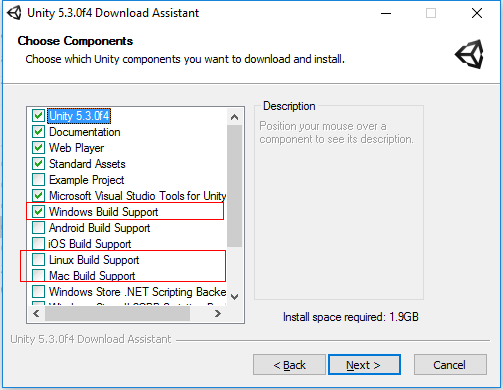- Linux On Mac Mini
- Go Build For Mac On Linux
- Build For Mac On Linux Operating System
- Compiling For Mac On Linux
- Build For Mac On Linux Mac
Sudo apt-get install build-essential clang-8 lld-8 g-7 cmake ninja-build libvulkan1 python python-pip python-dev python3-dev python3-pip libpng-dev libtiff5-dev libjpeg-dev tzdata sed curl unzip autoconf libtool rsync libxml2-dev && pip2 install -user setuptools && pip3 install -user -Iv setuptools47.3.1 && pip2 install -user distro && pip3 install -user distro. Separate build steps. Build and publish in parallel, using hard links on CI server to reduce IO and disk space usage. Electron-compile support (compile for release-time on the fly on build). Docker images to build Electron app for Linux or Windows on any platform. Proton Native support. The build system of SU2 is based on a combination of meson (as the front-end) and ninja (as the back-end). Meson is an open source build system meant to be both extremely fast, and, even more importantly, as user friendly as possible. Ninja is a small low-level build system with.
Linux On Mac Mini
Set Run-Time Library Path
At run time, you must tell the macOS and Linux® operating system where the API shared libraries reside by setting an environment variable. The macOS or Linux command you use and the values you provide depend on your shell and system architecture. The following table lists the name of the environment variable (envvar) and the value (pathspec) to assign to it. The term matlabroot refers to the root folder of your MATLAB® installation.
| Operating System | envvar | pathspec |
|---|---|---|
64-bit AppleMac |
|
|
64-bit Linux |
|
|
No, not at all, and it never has been. “Linux OS” is actually GNU/Linux, meaning that GNU supplies all the software tools for the user land (i.e. The commands that you type into the command line) and that “Linux” is the kernel that all the tools. For specific build settings, see PC, Mac, and Linux Standalone build settings. Universal Windows Platform The Universal Windows Platform An IAP feature that supports Microsoft’s In App Purchase simulator, which allows you to test IAP purchase flows on devices before publishing your application.
Using the C Shell
Set the library path using the command.

Replace the terms envvar and pathspec with the appropriate values from the table. For example, on a macOS system use:
You can place these commands in a startup script, such as ~/.cshrc.
Using the Bourne Shell
Set the library path using the command.
Replace the terms envvar and pathspec with the appropriate values from the table. For example, on a macOS system use:
Go Build For Mac On Linux

Build For Mac On Linux Operating System
You can place these commands in a startup script such as ~/.profile.
Compiling For Mac On Linux
For more information, see Append library path to 'DYLD_LIBRARY_PATH' in MAC.
Build For Mac On Linux Mac
For Developers > How-Tos > Get the Code: Checkout, Build, & Run Chromium
Subpages (6):Committing and reverting changes manuallyGclient Managed ModeManaging Multiple Working DirectoriesWorking with BranchesWorking with Nested Third Party RepositoriesWorking with Release Branches |